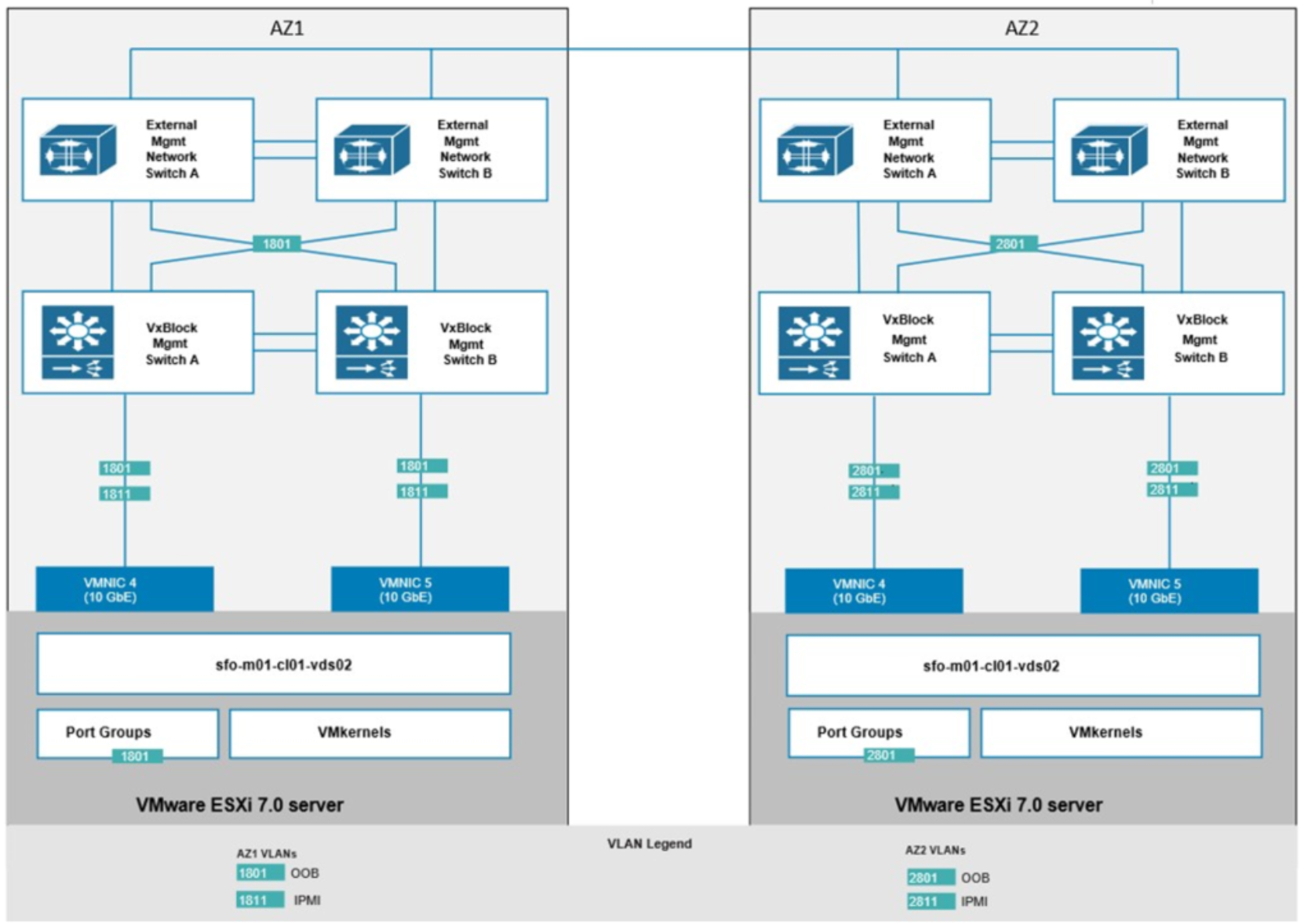Home > Integrated Products > VxBlock 1000 and 3-Tier Platform Reference Architectures > White Papers > VMware Cloud Foundation Stretched Cluster on Dell VxBlock 1000 Multi-Site > Management network topology
Management network topology
-
The VCF topology builds upon the AMP Central network topology and includes two VMware VDS. To use optional VMware vRealize Suite components, add NSX end nodes and application virtual networks to the management domain.
A DHCP server dynamically assigns overlay IP addresses to management domain hosts. The stretched cluster management domain is not supported with static pools.
The management domain stretch cluster has the following requirements:
- For availability zones that use VMware vSAN stretched clusters:
- Bandwidth between the zones must be at least 10 Gbps.
- Round-trip latency must be less than 5 milliseconds.
- Stretch management domain hosts can have only their host overlay IP addresses statically assigned.
- For the VCF management domain stretch cluster, the host in AZ1 requires two DHCP-assigned host overlay IP addresses. The ESXi hosts in AZ2 require two DHCP-assigned IP addresses for host overlay.
- Each AZ must have its own BGP Autonomous System Number (ASN).
- NSX end nodes establish a BGP peering relationship to ToR switches in both availability zones.
- Maximum network latency between NSX Managers is 10 milliseconds.
- Maximum network latency between the NSX manager cluster and transport nodes is 150 milliseconds.
- The cluster cannot have a VSAN remote datastore mounted.
- See VMware Docs for the applicable version of the VMware Cloud Foundation Operations and Administration Guide for the complete physical network requirements for multiple availability zones.
The following figure shows the VCF network topology for AMP Central stretched configuration for the Top of Rack network, as well VLAN details:

Figure 9. VCF network topology for AMP Central stretched configuration
The following figure show the VCF network topology for an AMP Central stretched configuration for the management network:

Figure 10. AMP Central stretched configuration for the management network
